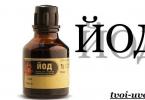Antifreeze is a non-freezing technological fluid designed to cool a running Toyota Camry engine at an external temperature from + 40C to - 30..60C. The boiling point of antifreeze is about +110C. The function of antifreeze also includes lubricating the internal surfaces of the Toyota Camry system, including the water pump, preventing corrosion. The life of the unit depends on the condition of the liquid.
Antifreezes are distinguished by the additives included in it:
Traditional antifreezes;
Hybrid antifreeze G-11 (Hybrid, "hybrid coolants", HOAT (Hybrid Organic Acid Technology));
Carboxylate antifreezes G-12, G-12+ ("Carboxylate coolants", OAT (Organic Acid Technology));
Lobrid antifreeze G-12 ++, G-13 ("Lobrid coolants" or "SOAT coolants").
Types and types of antifreeze for Toyota Camry
If you need to add coolant to your Toyota Camry, it is safe to mix only one type of antifreeze, not a color. Color is just a dye. It is forbidden to pour water (even distilled) into the Toyota Camry radiator, because in the heat at a temperature of 100C the water will boil and scale will form. In frost, the water will freeze, the pipes and radiator of the Toyota Camry will simply break.
Replace the coolant on a Toyota Camry for several reasons:
- The term of antifreeze ends - the concentration of inhibitors in it decreases, heat transfer decreases;
- The level of antifreeze from leaks has decreased - its level in the Toyota expansion tank should remain constant. In this case, it can leave through leaks in the joints, or cracks in the radiator, pipes.
- The level of antifreeze has decreased due to engine overheating - the antifreeze begins to boil, a safety valve opens in the plug of the expansion tank of the Toyota Camry cooling system, dumping antifreeze vapors into the atmosphere.
- Toyota Camry cooling system parts are being replaced or the engine is being repaired;
A frequently triggered radiator fan in the heat is a reason to check the quality of antifreeze. If you do not timely replace antifreeze with a Toyota Camry, then it will lose its properties. As a result, oxides are formed, there is a danger of the engine overheating in hot weather and its defrosting at low temperatures. The term of the first replacement for G-12+ antifreeze is 250 thousand kilometers, or 5 years.
Signs by which the state of used antifreeze in a Toyota Camry is determined:
- Test strip results;
- Antifreeze measurement in Toyota Camry with a refractometer or hydrometer;
- Change in color shade: for example, it was green, it became rusty or yellow, as well as turbidity, fading;
- The presence of chips, chips, scale, foam.
Replacing antifreeze and coolant on a Toyota Camry

Flushing the cooling system before pouring new antifreeze on Toyota CamryFlushing the Toyota Camry cooling system, before filling in new antifreeze, completely removes the protective layer and remnants of the old antifreeze, this is necessary when switching from one type to another. To flush the Toyota Camry radiator, you should use a special tool, which is often diluted with water in accordance with the instructions.
The finished flush is poured into the expansion tank of the Toyota Camry radiator with the engine turned off. It must first be warmed up to operating temperature so that the thermostat opens and the antifreeze begins to circulate through a large circle of the cooling system.
The engine is then started and allowed to idle for 30 minutes. Drain the flushing liquid. The operation is repeated depending on the composition of the outflowing liquid. The flushing mixture can be used only in the first run, in subsequent runs - distilled water. The time for replacing antifreeze with a Toyota Camry is from half an hour, with flushing - up to 1.5 hours.
During transitional periods that threaten with temperature changes, car owners need to check the condition of the cooling system. With how the replacement is done antifreeze in Toyota Camry 2.4 and others, any motorist can figure it out, regardless of the experience and knowledge of the device and the operation of the car.
If all units of the machine are working properly, fuel consumption is within acceptable limits, then it is enough to conduct a visual inspection of the tank with the level of antifreeze and radiator located in the engine compartment. When examining them, attention should be paid to the main indicators of quality:

To rule out problems with the cooling system, you need to pay attention to the following facts:

Benefits of a Healthy Cooling System
Paying attention to the condition of the cooling system is recommended due to the fact that replacing antifreeze is the easiest solution to all problems. At the same time, with untimely maintenance or a breakdown, the results of operating a faulty car can be much sadder. Even the most reliable engines fail when overheated. Much easier, at every recommended interval equal to 80 or 40 thousand km, make sure that antifreeze replacement on your toyota camry. The manufacturer recommends that the first coolant change be carried out after 160,000 km, and subsequent changes every 80,000 when using Super Long Life Coolant antifreezes. This recommendation is connected with the natural wear and tear of the materials that make up the parts and structures of the cooling system.
In addition to these factors, antifreeze, materials and parts are significantly affected by temperature changes. For the cooling system, such fluctuations are the most significant and relevant. Although designers are trying to create products with the highest thresholds of strength to withstand such influences. However, under such conditions, no material is capable of working indefinitely. Therefore, the timely replacement of antifreeze and rubber products is the best way to extend the performance of the entire mechanism as a whole. From an economic point of view, this method of maintaining a vehicle in good condition is recognized as the most profitable and expedient.
Spend your free time with the benefit of the cooling system
Conduct replacement of antifreeze on Toyota v 40 it won't be hard for anyone. Even if the owner does not trust his car to the specialists of the service center, he can successfully cope with the replacement of antifreeze on his Toyota with his own hands. This will take an hour of time to spare, flushing the cooling system and the antifreeze itself. It can be sold in the form of a concentrate and in a ready-made state. Replacing antifreeze camry 40 easy to do with your own hands, as you can see from the video is actually simple and not intricate:
- Drive the car into a pit or a lift;
- Twist all plugs and plugs from the cooling system;
- Drain the waste, while looking at the composition of the liquid. It should not contain heavy impurities. If metal chips or a large cloudy precipitate occurs, then the composition of the wash should be checked. Based on the results obtained, contact specialists who can determine the location of the problem and troubleshooting methods;
- After putting all the equipment and the cooling jacket in order, you can fill in the new recommended antifreeze.
timely replacing antifreeze in toyota camry 2.4 and others, a really profitable operation that allows you to extend the life of all the main units of the car, while maintaining the main operational and consumer qualities of the car.
Video on replacing antifreeze with a Camry 40
Antifreeze has an important function, it cools the entire motor system. Antifreeze is a cooling liquid that consists of water and a coolant (alcohol, ethylene glycol, glycerin, etc.). It is necessary to change the coolant in the car periodically. If you ignore the replacement, this can lead to overheating of the engine, its breakdown and repair.
Terms of changing antifreeze in Toyota
Signs of replacing antifreeze in Toyota: frequent engine overheating is observed, engine oil temperature is elevated. These are signals for checking the liquid level in the cooling system, its composition, sediment, color. If the car began to consume a lot of fuel, then this can also be a sign of problems with the refrigerant.
In the Toyota Camry V40 and Toyota Camry V50, there are no special differences in replacing the coolant. The amount of antifreeze in a Toyota Camry tank will depend on the engine size and year of manufacture of the car. The smaller the engine size, the smaller the amount of refrigerant. And the older the car, the greater the amount of antifreeze. Most often, about 6-7 liters of liquid are required.

Antifreeze replacement for Toyota Camry V40 and Toyota Camry V50 occurs according to the following principles:
- annually, every 70-100 thousand kilometers;
- you should pay attention to the instructions for the antifreeze itself and its service life;
- the timing of the replacement of the coolant should also be indicated in the car's instructions;
- another factor is the age of the machine, the older it is, the more wear on the cooling system, therefore, the fluid must be changed more often. In car dealerships, you can also purchase special indicator strips, by which you can easily learn how to determine the coolant replacement period.
The replacement of antifreeze in the Toyota Camry V50 should be taken more responsibly, since this car has a weak point - engine overheating.
Instructions for replacing the coolant
One of the highlights in replacing antifreeze is the choice of the product itself. You shouldn't skimp on this. The cost of high-quality refrigerant is from 1,500 rubles and more per 10 liters. When buying, you should pay attention to:
- color, it must match this machine. Preference is given to red liquids;
- freezing point, it should not be higher than (-40 C) - (-60 C);
- manufacturer's country. Of course, it is recommended to buy Japanese products. At the moment it is the highest quality;
- antifreeze grade. There are several classes: G11, G12, G13. Their hallmark is the service life of antifreeze.

You can replace antifreeze on a Toyota Camry at a car dealership or do it yourself. If you decide to change it in the cabin, then take care of choosing and buying antifreeze yourself to be sure of the quality of the product. If you decide to change the refrigerant yourself, then first read the manufacturer's instructions and take into account all safety measures, cool the car before replacing, put on a work uniform and gloves. So, you need 25 liters of water, 6 liters of antifreeze and a pan. The composition of the refrigerant must also be taken into account. There are ready-made liquids for cooling. And there are concentrates. To dilute the concentrate, you must strictly follow the instructions for use on the package, most often diluted in a ratio of 50x50.
Sequencing:
- Open the cap on the radiator and expansion tank;
- Install the pan under the engine and radiator;
- Unscrew the valves on the radiator and cylinder block, drain the antifreeze from the Toyota tank into the sump;
- Close the valves back;
- Flush the cooling system with water. Pour 5 liters of water into the radiator. Close radiator and expansion tank caps. Start the car, press the gas pedal and warm up the engine until the fan turns on;
- Stop the engine and drain the liquid, wait until the engine cools down;
- Repeat the procedure until the poured water becomes clear;
- Pour new fluid into the radiator with the engine cold. Start the car and work the pedal until the air is completely out of the system. In the Toyota Camry, the air comes out on its own;
- Then pour antifreeze for Toyota Camry into the expansion tank to a special mark;
- Close all covers. Remove tray.
What to do if air gets into the cooling system?
If, when replacing antifreeze in a Toyota Camry, air enters the cooling system, you must allow the engine to warm up well so that the radiator fan turns on. You should work on the pedal for about 5 minutes. The air itself will leave through the exhaust lines from the cooling system. In Toyota Camry, air escapes on its own and this is a great advantage when replacing coolant.

You can replace antifreeze yourself, you don’t need special tools, but you need to be informationally prepared:
- Changing the refrigerant takes a minimum amount of time;
- It is recommended to replace only with high-quality red liquids, do not save on the product;
- Allows you to save on maintenance at the dealership.
In the Toyota Camry XV40, the engine cooling system (ODS) includes a radiator, a fan, a heat exchanger, a centrifugal pump, a thermostat and an expansion tank. The failure of their system of one of the components of the system will most likely lead to a breakdown of the motor, which is fraught with expensive repairs.
Therefore, you should regularly monitor the state of the SOD and change the antifreeze in a timely manner, and it must be of exceptionally high quality. How to replace the coolant on the Camry V40, see the photo.
How much does it cost and what kind of antifreeze to fill
The manufacturer developed a special antifreeze "Toyota Super Long Life Coolant".
Antifreeze is toxic, so when working with it, we show caution and accuracy! In addition, change only on a cooled engine so as not to get burned!
Coolants from other manufacturers can also be used for a full replacement: TCL "Long Life Coolant - 50 ° C", product code LLC01236, a four-liter canister will cost 820 rubles. A bottle with a volume of 1 liter, catalog number LLC33145, price - 330 rubles. Patron "Antifreeze", with the article AFRED1PATRON. The price of a canister of 1 liter, product code AFRED1PATRON will be 240 rubles, and a five-liter canister with the article AFRED5PATRON, - 560 rubles.
Also, in the process of replacing antifreeze, it may be necessary to replace the radiator cap. The original cover from Toyota, product code 1640131520 costs 780 rubles. A number of replacements "under the original" are available: Masuma MOX202 - 170 rubles, Gates RC134 - 460 rubles, Metalcaucho 03605 - 150 rubles.
Prices are for autumn 2017 for Moscow and the region.
How to change antifreeze on a Toyota Camry XV40 with your own hands
According to, the first coolant change occurs at 160,000 km, and then the interval is reduced to 80,000.
Replacement instructions:
- We put the car on a flat surface.
- We unscrew the motor protection.
- Turning counterclockwise, unscrew the radiator cap.
- We unscrew the plug in the expansion tank, but do not unhook the steam outlet hose.
- We put a container under the faucet of the hole for draining the SOD radiator (it is located in the lower tank of the radiator). We turn the drain valve plug 2-3 turns and drain the liquid.
- We substitute the container for draining under the coolant drain valve located on the left side of the engine block and unscrew the drain plug by 2-3 turns and drain the coolant.
- Tighten the plugs of both drain valves by hand.
- Wash the SOD with water. To do this, slowly, pour water to the level of the steam pipe.
- We start the engine and let it run until the electric fan of the motor turns on.
- We turn off the engine and drain the liquid again.
- Rinse with SOD until clean water begins to flow.
- Pour new coolant into the radiator.
- We start the engine and warm it up to operating temperature. As air escapes from the SOD, add coolant to the radiator.
- Before air is removed from the system, the fan should turn off 3-4 times.
- Then, we twist the radiator cap and add antifreeze to the expansion tank to the “F” mark. We turn off the engine and let it cool down.
- We measure the antifreeze in the tank, top it up if necessary.
SOD at this time of engine operation is under pressure, when starting the engine, make sure that the plugs are tightly closed, otherwise coolant may leak from under a poorly closed plug.
What you need to replace
Useful:
- funnel;
- clean rag;
- gloves;
- container for draining the coolant (at least 7 liters);
- new coolant and radiator cap.
To replace the coolant on the Toyota Camry XV40, turn off the running engine and let it cool. We install the car on a flat horizontal surface, remove the lower mudguards of the engine.

In order to relieve pressure in the cooling system, slowly turn the cap of the expansion tank counterclockwise.

Open the plug of the expansion tank without disconnecting the steam hose from it. If necessary, remove the expansion tank and flush it.

We go down, we substitute the container under the drain valve of the cooling system radiator located in the lower radiator tank, unscrew the drain valve plug by 2-3 turns, put a rubber hose on the drainage spout, and drain the liquid.

Flush the cooling system, fill the system with water through the radiator filler neck to the level of the vapor pipe.
Antifreeze for Toyota Camry Xv40
The table shows the type and color of the required antifreeze for pouring into the Toyota Camry Xv40,produced from 2006 to 2011.
| Year | Engine | Type | Color | Lifetime | Featured Manufacturers |
| 2006 | petrol, diesel | G12+ | red | 5 years | Chevron, G-Energy, Freecor |
| 2007 | petrol, diesel | G12+ | red | 5 years | Havoline, MOTUL Ultra, Lukoil Ultra, GlasElf |
| 2008 | petrol, diesel | G12+ | red | 5 years | Havoline, AWM, G-Energy |
| 2009 | petrol, diesel | G12+ | red | 5 years | Havoline, MOTUL Ultra, Freecor, AWM |
| 2010 | petrol, diesel | G12+ | red | 5 years | Havoline, AWM, G-Energy, Freecor |
| 2011 | petrol, diesel | G12+ | red | 5 years | Frostschutzmittel A, VAG, FEBI, Zerex G |
When buying, you need to know the shade - Color And Type antifreeze, valid for the year of manufacture of your Camry Xv40. Select the manufacturer of your choice. Do not forget - each type of fluid has its own lifespan.  For example: for Toyota Camry (Body Xv40) 2006, with a gasoline or diesel engine type, suitable - carboxylate antifreeze class, type G12 + with shades of red. The approximate next replacement period of which will be 5 years. If possible, check the selected fluid against the requirements of the vehicle manufacturer's specifications and service intervals. It is important to know Each type of liquid has its own color. There are rare cases when a type is tinted with a different color.
For example: for Toyota Camry (Body Xv40) 2006, with a gasoline or diesel engine type, suitable - carboxylate antifreeze class, type G12 + with shades of red. The approximate next replacement period of which will be 5 years. If possible, check the selected fluid against the requirements of the vehicle manufacturer's specifications and service intervals. It is important to know Each type of liquid has its own color. There are rare cases when a type is tinted with a different color.
The color of red antifreeze can be from purple to light pink (green and yellow have the same principles).  Mix liquid from different manufacturers - Can if their types match the blending conditions. G11 can be mixed with G11 analogues
G11 must not be mixed with G12
G11 can be mixed with G12+
G11 can be mixed with G12++
G11 can be mixed G13
G12 can be mixed with G12 analogues
G12 must not be mixed with G11
G12 can be mixed with G12+
G12 must not be mixed with G12++
G12 must not be mixed with G13
G12+, G12++ and G13 can be mixed together
It is not allowed to mix Antifreeze with Antifreeze. No way! Antifreeze and Antifreeze - very different in quality. Antifreeze is the trade name for the traditional type (TL) of an old-style coolant. At the end of the service life - the liquid completely discolors or becomes very dull. Before replacing one type of fluid with another, flush the car radiator with plain water.
Mix liquid from different manufacturers - Can if their types match the blending conditions. G11 can be mixed with G11 analogues
G11 must not be mixed with G12
G11 can be mixed with G12+
G11 can be mixed with G12++
G11 can be mixed G13
G12 can be mixed with G12 analogues
G12 must not be mixed with G11
G12 can be mixed with G12+
G12 must not be mixed with G12++
G12 must not be mixed with G13
G12+, G12++ and G13 can be mixed together
It is not allowed to mix Antifreeze with Antifreeze. No way! Antifreeze and Antifreeze - very different in quality. Antifreeze is the trade name for the traditional type (TL) of an old-style coolant. At the end of the service life - the liquid completely discolors or becomes very dull. Before replacing one type of fluid with another, flush the car radiator with plain water.



